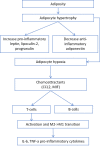Innate and Adaptive Immunity in Aging and Longevity: The Foundation of Resilience
- PMID: 33269094
- PMCID: PMC7673842
- DOI: 10.14336/AD.2020.0603
Innate and Adaptive Immunity in Aging and Longevity: The Foundation of Resilience
Abstract
The interrelation of the processes of immunity and senescence now receives an unprecedented emphasis during the COVID-19 pandemic, which brings to the fore the critical need to combat immunosenescence and improve the immune function and resilience of older persons. Here we review the historical origins and the current state of the science of innate and adaptive immunity in aging and longevity. From the modern point of view, innate and adaptive immunity are not only affected by aging but also are important parts of its underlying mechanisms. Excessive levels or activity of antimicrobial peptides, C-reactive protein, complement system, TLR/NF-κB, cGAS/STING/IFN 1,3 and AGEs/RAGE pathways, myeloid cells and NLRP3 inflammasome, declined levels of NK cells in innate immunity, thymus involution and decreased amount of naive T-cells in adaptive immunity, are biomarkers of aging and predisposition factors for cellular senescence and aging-related pathologies. Long-living species, human centenarians, and women are characterized by less inflamm-aging and decelerated immunosenescence. Despite recent progress in understanding, the harmonious theory of immunosenescence is still developing. Geroprotectors targeting these mechanisms are just emerging and are comprehensively discussed in this article.
Keywords: adaptive immunity; aging; innate immunity; longevity; resilience.
copyright: © 2020 Moskalev et al.
Figures







References
-
- Stambler I (2015). Elie Metchnikoff-The founder of longevity science and a founder of modern medicine: In honor of the 170th anniversary. Adv Gerontol, 5:201-208. - PubMed
-
- Müller L, Di Benedetto S, Pawelec G The Immune System and Its Dysregulation with Aging. In: Harris JR Korolchuk VI, editors. Biochemistry and Cell Biology of Ageing: Part II Clinical Science. Singapore: Springer Singapore; 2019, pp. 21-43. - PubMed
-
- Pawelec G (2017). Does the human immune system ever really become "senescent"? F1000Research, 6:F1000 Faculty Rev-1323. - PubMed
-
- Franceschi C, Capri M, Monti D, Giunta S, Olivieri F, Sevini F, et al. (2007). Inflammaging and anti-inflammaging: a systemic perspective on aging and longevity emerged from studies in humans. Mech Ageing Dev, 128:92-105. - PubMed
Publication types
LinkOut - more resources
Full Text Sources
Research Materials
